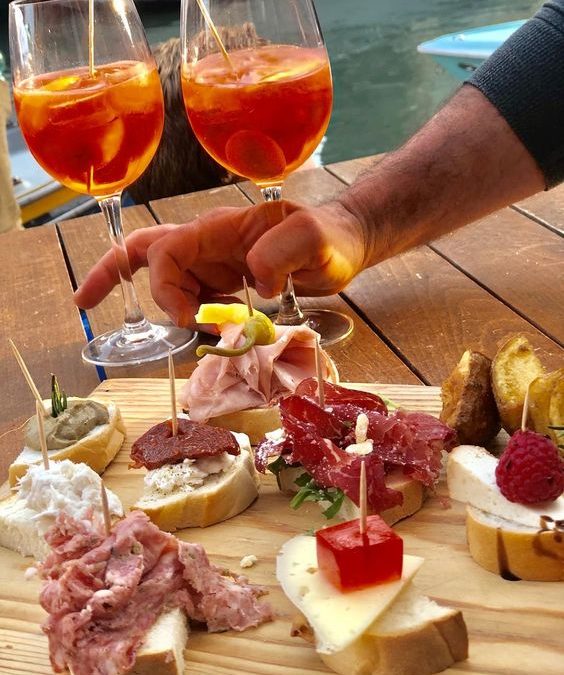Italy’s cocktail and aperitif tradition is long and valued: there are many multiple differences between different drinks and drinking customs.
From a fresh and simple Bellini, made with just some peach juice and wine, to a stronger Angelo Azzurro (blue angel), which is more suitable for an after dinner, Italy has a long tradition and culture of cocktails. There’s an important distinction between an aperitif and a cocktail: the first is supposed to get you tastebuds ready to enjoy a wonderful dinner; the second belongs to late evening, or when you feel like enjoying a stronger spirit, preferably on a full stomach. Many of these drinks, like Negroni or Cardinale, have an historical origin, and their names bring us back to their creation. How not to mention Martini? This pre-dinner and post-dinner vermut (if you mix it with gin or vodka), has conquered the whole world.
Let us start with something sweet and easy: from fruit cocktails to Aperol Spritz
The first drinks we are presenting you are lighter drinks, which Italians usually consume before eating or even in the afternoon: some of them are fruit-based, like the already mentioned Bellini (made with peach juice) or the variations Puccini (with mandarin juice) and Rossini (with strawberry juice). Another worldwide known medium drink is Mimosa, another version of Bellini, with orange juice and Prosecco. A typical aperitif, which was originated in Venice but is today famous all over the country and even abroad, is Aperol Spritz. During the last few years, Hugo has also acquired some fans in Europe: this fresh drink characterised by a summer-like taste was created in Trentino Alto Adige in 2005.
Strong endings (and spirits): authentic Italian cocktails
In case you are feeling like trying something stronger, you have a wide choice among classics like Negroni or Negroni Sbagliato, Americano, Cardinale or something more modern like Angelo Azzurro (which translates to blue angel). These drinks have long traditions as well, and are made using strong spirits like gin, vermouth, and bitter Campari: it might be better to enjoy one on a full stomach! Italians love to sit together talking and enjoying one of these drinks after a full meal or to have one before a party or a night out, to get in the mood. Just for the records: Negroni was born in Florence in 1919, to please Earl Camillo Negroni who preferred a stronger version of the Americano.
The importance of the tradition of cocktails and “Aperitivo all’italiana”
These cocktails are recognised as authentically Italian, starting from their iconic names: what is more, cocktails and aperitifs have a long tradition in Italy, and its customs are widely imitated abroad. The “aperitivo all’italiana” is thought to be always accompanied with food, generally olives and/or bread or focaccia with cold cuts, and it is enjoyed worldwide, since it brings a sense of culture and tradition together with amazing food and drinks. Even new forms have arisen, like the “apericena”, where people pay for one drink and then have dinner in a buffet which offers multiple typical dishes. If you want to feel like a true Italian, make sure you get your aperitivo right!

